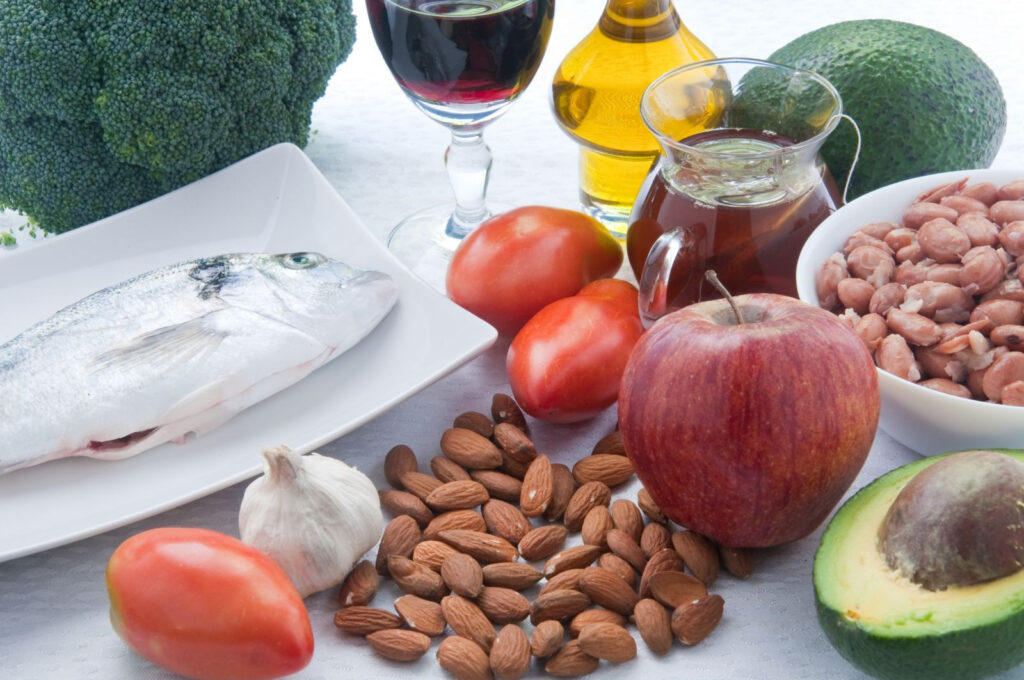
Picture this: It’s a sunny Saturday morning, and I’m at the farmer’s market, weaving through vibrant stalls overflowing with juicy apples, plump berries, and golden mangoes. The air smells sweet, and I can’t help but grab a peach, its fuzzy skin warm from the sun. As I bite into it, the juice dribbles down my chin, and I’m reminded why I love fruit—not just for the flavor, but for what it does for my body. Lately, I’ve been diving into how fruits can help lower cholesterol, and let me tell you, the science is as exciting as that first bite of a ripe peach. If you’re looking to keep your heart healthy and your cholesterol in check, fruits might just be your tastiest ally. Let’s explore how these natural wonders work their magic, backed by science, sprinkled with stories, and packed with practical tips you can start using today.
Understanding Cholesterol: The Basics Before the Fruit Bowl
Before we dive into the fruity goodness, let’s get a quick grip on cholesterol. It’s a waxy substance in your blood, essential for building cells and producing hormones, but too much of the “bad” kind—LDL (low-density lipoprotein)—can clog arteries, raising your risk of heart disease. HDL (high-density lipoprotein), the “good” cholesterol, helps clear out LDL, keeping your ticker happy. Diet plays a massive role in balancing these levels, and that’s where fruits come in. According to the American Heart Association, what you eat can significantly influence your cholesterol levels, and fruits are a powerhouse in this fight.
I learned this the hard way a few years ago when a routine checkup showed my LDL creeping up. My doctor suggested dietary changes before jumping to meds, and that’s when I started experimenting with fruits. Spoiler: It wasn’t just about eating apples instead of chips—it was about understanding why certain fruits work and how to make them a habit.
Why Fruits? The Science Behind Their Cholesterol-Lowering Powers
Fruits aren’t just colorful treats; they’re packed with nutrients that tackle cholesterol head-on. The secret lies in their fiber, antioxidants, and plant compounds like phytosterols. Let’s break it down:
- Soluble Fiber: Found in fruits like apples, oranges, and berries, soluble fiber binds to cholesterol in your digestive system, preventing it from entering your bloodstream. A study from the National Institutes of Health found that diets high in soluble fiber can reduce LDL cholesterol by 5–10%.
- Antioxidants: Fruits like blueberries and pomegranates are rich in antioxidants, which reduce inflammation and prevent LDL oxidation—a process that makes cholesterol more dangerous. The Journal of Nutrition highlights how antioxidants in berries improve heart health.
- Phytosterols: These plant compounds, found in fruits like avocados, mimic cholesterol’s structure, competing with it for absorption in your gut. The Cleveland Clinic notes that phytosterols can lower LDL by up to 15%.
My go-to breakfast used to be a sugary cereal, but swapping it for a bowl of oatmeal topped with berries and a sliced apple changed the game. Not only did I feel fuller, but my next cholesterol test showed a noticeable dip in LDL. It’s not magic—it’s science, and it’s delicious.
Top Fruits for Lowering Cholesterol: Nature’s Heart Heroes
Not all fruits are created equal when it comes to cholesterol. Here’s a rundown of the best ones, backed by research, and how they fit into your daily life:
Apples: An Apple a Day Keeps the Cardiologist Away
Apples are loaded with pectin, a type of soluble fiber that’s a cholesterol-busting superstar. A study in the European Journal of Nutrition showed that eating two apples daily can lower LDL by up to 8%. I started packing an apple for my mid-morning snack, pairing it with almond butter for extra heart-healthy fats. It’s simple, satisfying, and keeps me from raiding the vending machine.
Berries: Tiny but Mighty
Blueberries, strawberries, and raspberries are antioxidant powerhouses. Their polyphenols reduce LDL oxidation, protecting your arteries. The American Journal of Clinical Nutrition found that regular berry consumption can improve HDL levels too. I love tossing a handful of mixed berries into my morning smoothie—it’s like a burst of summer that’s secretly working for my heart.
Citrus Fruits: Zesty and Heart-Smart
Oranges, grapefruits, and lemons are rich in pectin and vitamin C, which support heart health. A study from the University of Florida showed that grapefruit can lower LDL and triglycerides. Just a heads-up: Grapefruit can interact with certain medications, so check with your doctor. I squeeze fresh lemon into my water daily—it’s refreshing and a small step toward better cholesterol.
Avocados: Creamy and Cholesterol-Friendly
Technically a fruit, avocados are rich in monounsaturated fats and phytosterols. Research in the Journal of the American Heart Association found that replacing saturated fats with avocados can lower LDL significantly. I spread avocado on whole-grain toast for lunch, and it feels indulgent while being heart-healthy.
Pomegranates: The Jewel of Heart Health
Pomegranates are packed with punicalagins, antioxidants that reduce cholesterol plaque in arteries. A study in the Journal of Nutritional Biochemistry showed that pomegranate juice can lower LDL and boost HDL. I’ll admit, pomegranates are a bit high-maintenance, but sprinkling the seeds over a salad is worth the effort.
Comparison Table: Fruits That Fight Cholesterol
Here’s a quick look at how these fruits stack up in their cholesterol-lowering benefits:
| Fruit | Key Nutrient | Cholesterol Benefit | Serving Suggestion | Approx. LDL Reduction |
|---|---|---|---|---|
| Apple | Pectin (Soluble Fiber) | Binds cholesterol in gut | 1–2 medium apples daily | Up to 8% |
| Berries | Polyphenols | Reduces LDL oxidation, boosts HDL | 1 cup mixed berries in smoothies | 5–10% |
| Citrus Fruits | Pectin, Vitamin C | Lowers LDL and triglycerides | 1 orange or ½ grapefruit daily | 7–12% |
| Avocado | Monounsaturated Fats | Replaces bad fats, lowers LDL | ½ avocado on toast or in salads | Up to 15% |
| Pomegranate | Punicalagins | Reduces arterial plaque, boosts HDL | ¼ cup seeds or 4 oz juice daily | 10–15% |
This table is a handy guide for planning your fruit intake. Mix and match these fruits to keep things exciting and maximize benefits.
How to Incorporate Fruits into Your Diet: Practical Tips
Knowing which fruits help is one thing; making them a seamless part of your life is another. Here are some actionable tips to get more cholesterol-lowering fruits into your day:
- Start Your Day Right: Blend a smoothie with berries, an orange, and a handful of spinach. It’s quick, nutrient-packed, and keeps you full. Check out Smoothie Recipes from Mayo Clinic for inspiration.
- Snack Smart: Swap processed snacks for fruit-based options. An apple with peanut butter or a handful of berries with yogurt is both satisfying and heart-healthy.
- Get Creative with Meals: Add fruits to savory dishes. Think pomegranate seeds in a quinoa salad or grilled peaches with a chicken dish. The Food Network has great ideas for pairing fruits with meals.
- Batch Prep: Wash and chop fruits like apples and citrus at the start of the week. Store them in airtight containers for grab-and-go convenience.
- Mind the Sugar: While fruits are healthy, fruit juices and dried fruits can be high in sugar. Stick to whole fruits to maximize fiber and minimize sugar spikes, as advised by the Harvard T.H. Chan School of Public Health.
I started keeping a fruit bowl on my kitchen counter, and it’s been a game-changer. Seeing those vibrant colors reminds me to grab a piece of fruit instead of a cookie. Small changes, big impact.
The Bigger Picture: Fruits as Part of a Heart-Healthy Lifestyle
Fruits alone aren’t a cure-all. They work best as part of a broader heart-healthy lifestyle. Pair them with other cholesterol-lowering foods like oats, nuts, and fatty fish, as recommended by the Mayo Clinic. Exercise, stress management, and avoiding smoking also play a role. I found that combining daily walks with my fruit-heavy diet made me feel energized and kept my cholesterol trending downward.
It’s also worth noting that not everyone responds to dietary changes the same way. Genetics can influence cholesterol levels, so regular checkups are key. My cousin, for example, needed medication despite a healthy diet, but adding fruits still helped her manage her numbers better.
FAQ: Your Burning Questions About Fruits and Cholesterol Answered
Can eating fruit alone lower my cholesterol significantly?
While fruits like apples and berries can reduce LDL by 5–15%, they work best alongside other heart-healthy habits like cutting saturated fats and exercising. Think of fruits as a key player, not the whole team.
Are canned or frozen fruits as effective as fresh ones?
Yes, as long as they’re unsweetened. Frozen berries retain their antioxidants, and canned fruits like peaches in water or juice are fine. Check labels to avoid added sugars, per WebMD.
How much fruit should I eat daily to see cholesterol benefits?
Aim for 2–3 servings (about 2 cups) of cholesterol-lowering fruits daily. Mix it up with apples, berries, and citrus for variety and maximum impact.
Can too much fruit be bad for cholesterol?
Whole fruits are generally safe, but overdoing fruit juices or dried fruits can spike blood sugar, which may indirectly affect heart health. Stick to whole fruits and moderate portions.
Do I need to avoid certain fruits if I’m on cholesterol medication?
Grapefruit can interact with statins, a common cholesterol drug. Always consult your doctor about fruit-drug interactions, as advised by the FDA.
Conclusion: A Fruity Future for Your Heart
As I finish writing this, I’m munching on a crisp apple, reflecting on how simple changes—like adding more fruits to my diet—have made a difference in my health. Fruits aren’t just a tasty treat; they’re nature’s way of helping us fight cholesterol and protect our hearts. From the pectin in apples to the antioxidants in berries, each bite is a step toward better health. The science backs it up, and my own journey—from high LDL to better numbers—proves it’s doable.
Ready to start? Grab a piece of fruit right now. Blend it, snack on it, or toss it into a salad. Pair it with other heart-smart habits like walking or cutting back on fried foods. Check in with your doctor to track your progress, and don’t be afraid to experiment with new fruits or recipes. Your heart will thank you, and who knows? You might just discover a new favorite fruit along the way. Here’s to a healthier, fruit-filled life!
